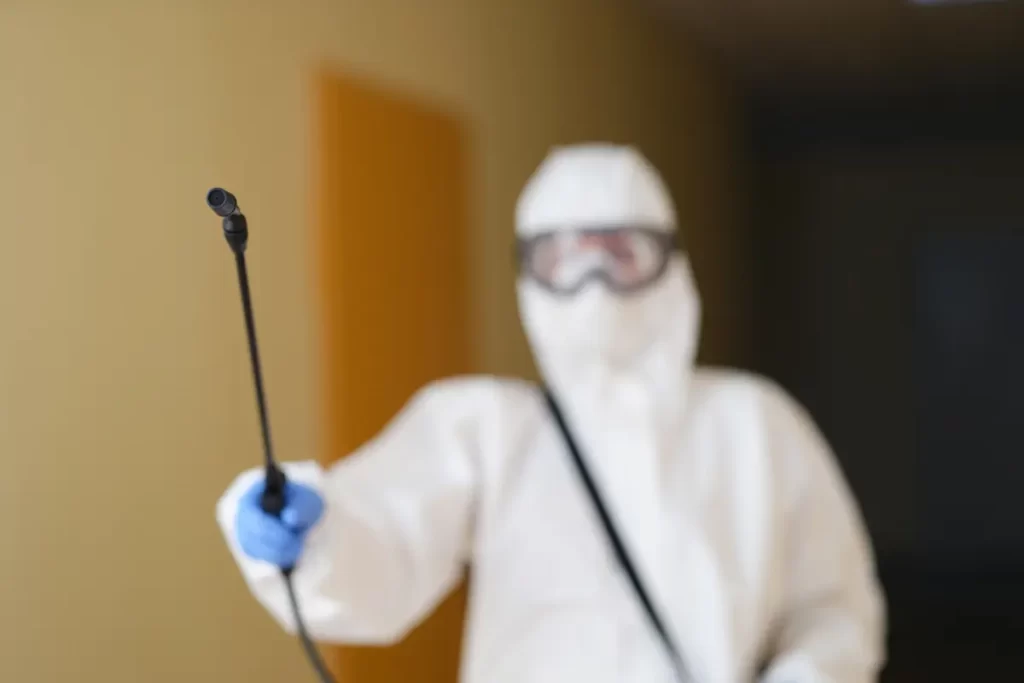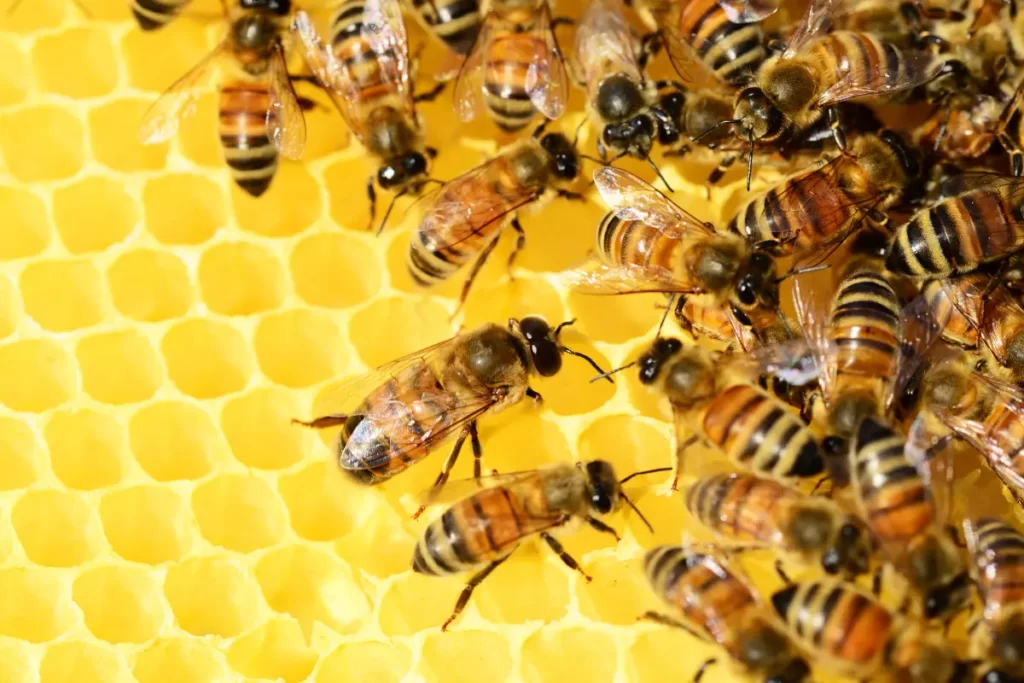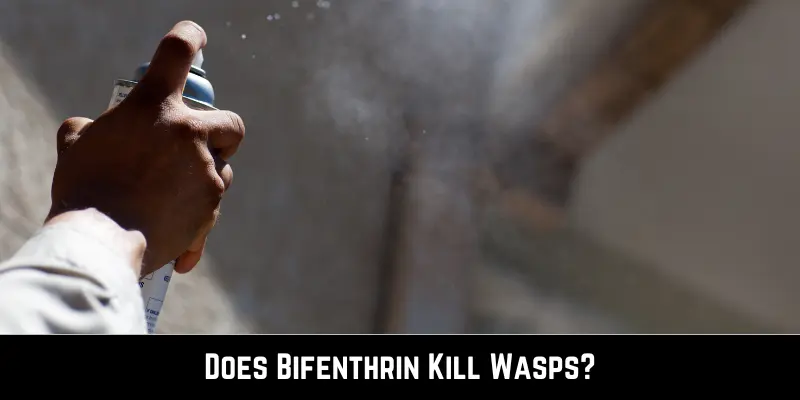Bifenthrin is a widely used bug spray that helps control many pests. Many folks wonder if it works on different bugs, especially wasps. The big question is, does bifenthrin kill wasps?
Yes, bifenthrin kill wasps. It helps people deal with these stinging bugs, making places safer and more comfy. It affects the wasp’s nervous system, which causes the wasp to die. But it’s really important to use it correctly and follow safety steps to ensure it doesn’t hurt other animals or our environment.
If you want to know more about how bifenthrin works on wasps, how to use it properly, and how to stay safe, keep reading this detailed article!
What is Bifenthrin?
Bifenthrin is a smart chemical made to protect against many pests. It is part of the pyrethroid family, which are man-made chemicals inspired by natural ones found in chrysanthemum flowers.
This clever creation shows how we can use nature’s own ways of protecting itself and make it even better. Bifenthrin is more than just a chemical.It’s a sign of how we keep trying to find a balance between what people need and keeping nature safe.
Chemical Composition
When we look closer at what makes up bifenthrin, we find a mix of different atoms arranged uniquely. The formula, C23H22ClF3O2, includes carbon, hydrogen, chlorine, fluorine, and oxygen atoms, each important for making it work well.
The way these atoms are put together makes bifenthrin solid and stable. Because it has chlorinated hydrocarbon in it, it’s really good at targeting the nervous systems of pests, making it a powerful tool for keeping our spaces safe and peaceful from pests.
Common Uses

| Use | Application | Benefits | Considerations |
| Agricultural Pest Control | Applied to a plethora of crops to combat various pests | Enhanced yield, reduced crop damage | Mindfulness towards application rates and non-target species |
| Residential Pest Control | Utilized in homes and gardens for diverse pest management | Secured sanctuaries, protection of ornamental beauty | Application safety, consideration for pets and wildlife |
| Termiticide | Deployed as a barrier treatment around structures | Structural integrity, prevention of wood damage | Environmental considerations, application guidelines |
| Turf Management | Used on lawns and golf courses for pest mitigation | Aesthetic enhancement, healthy turf growth | Runoff management, impact on non-target insects |
| Mosquito Control | Employed in public and private spaces against mosquitoes | Reduced disease transmission, increased outdoor comfort | Impact on pollinators, application frequency |
Does Bifenthrin Work on Wasps?

Yes, Bifenthrin works on wasps. Bifenthrin, coming from the pyrethroid family, acts like the defense system of chrysanthemum flowers, showing how clever humans can be in using nature’s tricks. When it meets wasps, this chemical works its magic by messing up their nervous system.
It acts in a gentle but powerful way, stopping the wasps from moving or working and, in the end, making them inactive. This might be hard to see, but it’s like a well-planned dance where Bifenthrin leads, and the wasps follow until they can’t anymore.
The story of how well bifenthrin works against wasps is a winning one, but it also reminds us to be careful. Using this chemical means we must follow the rules and remember how all living things are connected.
By using bifenthrin wisely, we’re not just getting rid of annoying wasps but also ensuring all different kinds of life and the environment can live together peacefully.
How to Apply Bifenthrin Safely on Wasps and their Nest?
Bifenthrin, a strong helper in our ongoing fight for a bug-free, peaceful space. Using bifenthrin is like being a careful artist it needs knowledge, accuracy, and a thoughtful approach to nature around us.
Following guidelines and being responsible help us use it safely and keep a balance with all the different forms of life in our surroundings.
Protective Measures

| Measure | Purpose | Implementation |
| Personal Protective Equipment (PPE) | Safeguarding the applicator | Donning gloves, masks, and coveralls |
| Proper Ventilation | Mitigating inhalation risks | Ensuring open spaces and airflow during application |
| Accurate Dosage | Preventing overexposure to non-target species | Adhering to label recommendations and guidelines |
| Storage and Disposal | Mitigating environmental impact | Secure storage and appropriate waste management |
Step-By-Step Application
- Get Ready Safely: Put on safety gear and mix the bifenthrin solution according to the instructions on the label. Make sure the area is well-aired.
- Check the Area: Look around the space, find where the pests are, and see what other living things are there.
- Apply Carefully: Use the bifenthrin with precision and caution, focusing on the places with pests and using the right amount as directed.
- Watch and Wait: After applying, keep an eye on the area to make sure everything stays balanced and the bifenthrin is working as it should.
- Clean Up: After everything is done, clean up carefully, put the bifenthrin away safely, and make sure no leftovers are lying around.
By following these steps, you can ensure that you’re using bifenthrin safely and responsibly, keeping both your immediate environment and the wider world in mind.
How Fast Does Bifenthrin Kill Wasps?
Bifenthrin is like a maestro in controlling pests, especially working well in disrupting the wasps’ nerves. This chemical, inspired by nature’s own protections, works precisely, making the wasps unable to move. It’s not slow-acting. Instead, it works quickly, often showing results in just a few hours.
The wasps, caught up in this situation, can’t withstand the power of bifenthrin, stopping their movements and silencing their presence.
The fast action of bifenthrin shows how clever people can be, but it also reminds us to use it wisely and think about nature. The process, although fast, should be balanced, making sure nature keeps on thriving, and all different kinds of life continue to exist together.
Environmental Concerns
Taking care of the balance between people’s progress and protecting the environment means we need to watch closely how what we do affects our world. Bifenthrin, while being a helpful solution against pests, also brings up concerns about its effects on nature.
The story around bifenthrin and the environment is about maintaining balance, understanding the give-and-take, and the ongoing effects of its use.
Rivers might be affected in ways we can’t see, the ground could show signs of change, and the air may have unseen changes, all as part of how nature interacts with this man-made helper.
Impact on Non-Target Species

| Species | Impact | Mechanism | Long-Term Effects |
| Bees | Impaired foraging, reduced population | Neurotoxic effects, disruption of navigation | Diminished pollination, ecological imbalance |
| Aquatic Organisms | Altered behavior, mortality | Neurotoxicity, impact on gill function | Disruption in aquatic ecosystems, decline in species |
| Earthworms | Reduced population, impaired functionality | Toxicity to digestive system, disruption of soil integration | Altered soil composition, hindered plant growth |
| Plants | Growth inhibition, physiological alterations | Impact on cellular function, disruption of growth processes | Reduced biodiversity, altered ecosystem dynamics |
| Birds | Reduced reproduction, behavioral alterations | Ingestion, bioaccumulation | Decline in bird populations, altered food chains |
Regulatory Status
| Country/Region | Status | Guidelines/Restrictions |
| United States | Restricted Use Pesticide | Usage guidelines, environmental considerations |
| European Union | Approved, with restrictions | Restricted application, periodic review |
| Canada | Registered | Adherence to label instructions, environmental considerations |
Conclusion
When we take a moment to look at how bifenthrin interacts with all the different areas it affects, we see a detailed and balanced story. This man-made chemical acts like a guardian for our spaces, stopping annoying insects and helping nature stay peaceful.
Using bifenthrin is about finding the right balance, applying it carefully, and having great respect for all forms of life connected to each other.In both nature and our own spaces, how we use bifenthrin comes with a responsibility to take care of our surroundings.
FAQs
Yang, Ye, Nanxiang Wu, and Chunlei Wang. “Toxicity of the pyrethroid bifenthrin insecticide.” Environmental Chemistry Letters 16 (2018): 1377-1391.

